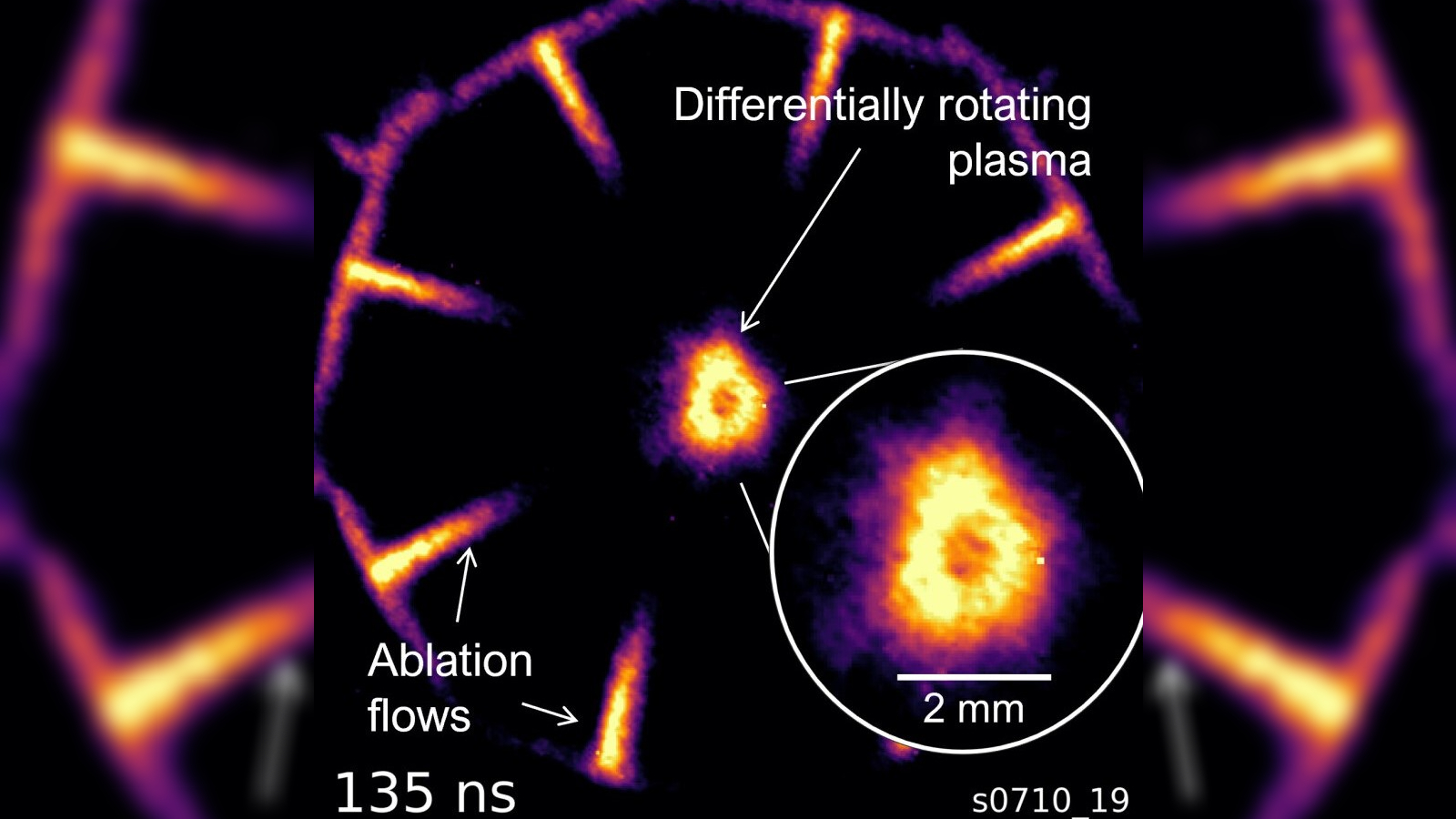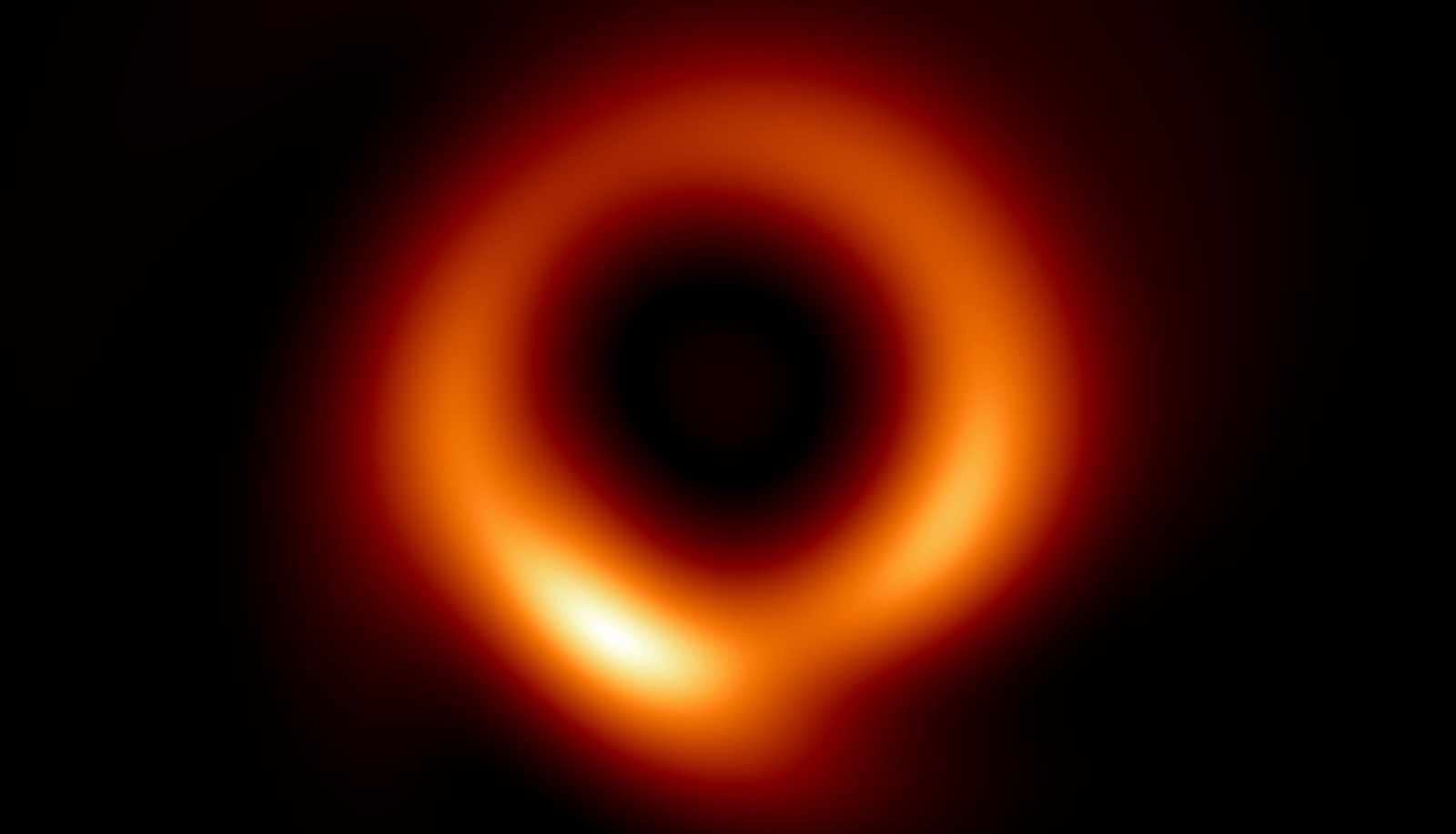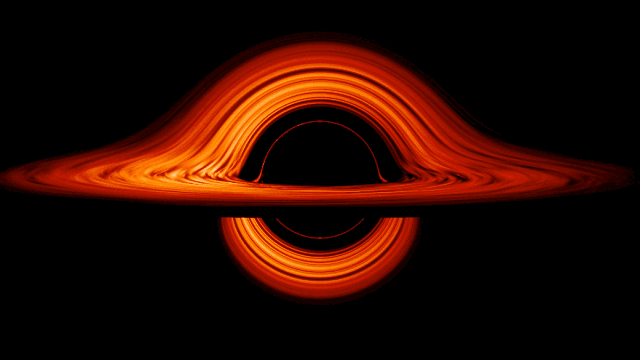
Scientists have created superheated rings of plasma that mimic the shining accretion disks that rotate around black holes at incredible speeds. The lab experiments could shed light on how black holes grow.
An accretion disk is a ring of superheated plasma, or ionized gas, that spins around a black hole's event horizon, the boundary beyond which nothing, not even light, can escape. The ring's superfast rotation creates centrifugal force that pushes the plasma outward, counteracting the black hole's gravity and keeping the plasma in a stable orbit. The plasma is made up of matter that gets pulled toward the black hole's boundary before being superheated by its intense gravitational force.
The only direct observation of an accretion disk is the blurred halo of orange light photographed around M87*, a solar system-size black hole at the heart of the galaxy Messier 87. But now, researchers at Imperial College London have recreated one using the university's Mega Ampere Generator for Plasma Implosion Experiments (MAGPIE) machine.
MAGPIE created the artificial rings by accelerating eight separate plasma jets and colliding them to form a central spinning column, within which plasma nearer the center rotated faster than plasma toward its edge, just like in an accretion disk, the researchers wrote in a statement. The rotating masses lasted for only one full rotation, which takes around 150 nanoseconds (150 billionths of a second) to complete. But the researchers hope that they will be able to extend the duration of the pulses, allowing them to see how the disks grow over multiple rotations.
The results were published May 12 in the journal Physical Review Letters.
Related: A messy black hole may have just triggered the largest explosion in the universe

The team hopes that future experiments involving sustained plasma rings will help answer one of the biggest questions about accretion disks: How do black holes grow if the accretion disks stay in stable orbits around the event horizons?
"The leading theory is that instabilities in magnetic fields in the plasma cause friction, causing [the plasma] to lose energy and fall into the black hole," the researchers wrote in the statement. But future experiments may be able to prove this theory, they added.
"Understanding how accretion disks behave will not only help us reveal how black holes grow, but also how gas clouds collapse to form stars," study lead author Vicente Valenzuela-Villaseca, an astrophysicist at Princeton University and a former doctoral student at Imperial College London, said in the statement. Future experiments could also shed light on how to improve nuclear fusion reactors on Earth, he added.
The accretion disk proxies could also provide a reference point for researchers analyzing black hole data collected by the Event Horizon Telescope, a global array of eight large radio dishes dedicated to studying supermassive black holes in the Milky Way and our neighboring galaxies.

This is not the first time that scientists have attempted to study back holes in the lab. In the past, researchers have tried to recreate accretion disks by pumping liquid metals through circular pipes at high speeds to mimic the properties of plasma. But because the metallic fluid is contained within a pipe rather than forming naturally, researchers can learn a limited amount via this method.
In November 2022, researchers also used a single-file chain of atoms to simulate the event horizon of a black hole. Their results revealed that black holes likely produce Hawking radiation, a faint glow of radiation from virtual particles that randomly pop into existence near the black hole boundaries — a phenomenon first predicted by Stephen Hawking.
Scientists have also used lab equipment to copy other cosmic entities, such as the sun. In January, researchers at the University of California, Los Angeles unveiled an artificial "mini sun" that can generate sound waves to mimic the effects of gravity. And in April, researchers at the California Institute of Technology created tiny artificial solar flares for the first time.







